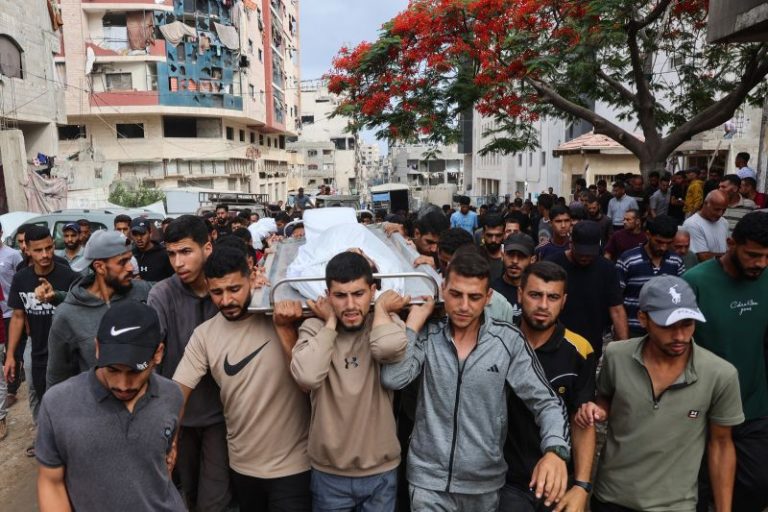The Israeli military has denied a new report that soldiers were ordered to fire at unarmed Palestinians waiting for humanitarian aid in Gaza, after hundreds of people were reported killed while approaching food distribution sites in recent weeks.
On Friday, the daily Haaretz newspaper published an article alleging that Israeli soldiers in Gaza were instructed by their commanders to shoot at the crowds of Palestinians approaching aid sites, even as it was evident that the crowds posed no threat.
One soldier who spoke anonymously with Haaretz described the approach routes to the aid sites as a “killing field” where Israeli forces open fire even if there is no immediate threat. According to the article, Israeli forces recently began dispersing crowds with artillery shells, which resulted in a sharp rise in casualties.
“We strongly reject the accusation raised in the article — the IDF did not instruct the forces to deliberately shoot at civilians, including those approaching the distribution centers,” the Israel Defense Forces (IDF) said in response to the article. “To be clear, IDF directives prohibit deliberate attacks on civilians.”
Israeli Prime Minister Benjamin Netanyahu and Defense Minister Israel Katz have also rejected the report as “vicious lies designed to discredit the IDF – the most moral army in the world.”
More than 500 Palestinians have been killed as they approached aid sites or trucks carrying aid since May 27, according to the Palestinian Ministry of Health. Palestinians have come under fire on a near daily basis as they approach the sites, health officials and emergency responders have said.
On multiple occasions, the IDF has acknowledged firing what it called “warning shots” at Palestinians approaching military positions near aid distribution sites. It has also said that it is examining reports of casualties, but it has not publicly released any findings to date.
According to Haaretz, the Military Advocate General has instructed the IDF General Staff’s Fact-Finding Assessment Mechanism – which reviews incidents involving the potential violations of the laws of war – to investigate suspected war crimes near the aid sites.
“Any allegation of a deviation from the law or IDF directives will be thoroughly examined, and further action will be taken as necessary,” the IDF said on Friday.
Shots fired at controversial aid sites
The Gaza aid sites where the deaths have occurred are run by the controversial Israel- and US-backed Gaza Humanitarian Foundation (GHF), which hands out pre-packaged boxes of food at a handful of locations in southern and central Gaza. The group’s distribution was chaotic from the start one month ago, with crowds of desperate Palestinians rushing the sites the moment they open to take the available aid before it runs out, often within less than an hour.
GHF was set up to replace the United Nations aid distribution mechanism, which Israel and the US have accused Hamas of looting. Hamas has rejected those claims, and humanitarian groups say most of the UN-distributed food aid reaches civilians.
GHF coordinates with the Israeli military to designate specific routes for Palestinians traveling to their aid sites and has come under sharp criticism from aid experts. It has acknowledged some episodes of violence occurring outside of its immediate aid sites, but repeatedly described food distribution operations as having “proceeded without incident.”
In response to the Haaretz reporting, the organization said it was “not aware” of the specific incidents described. Nevertheless, it added, “these allegations are too grave to ignore and we therefore call on Israel to investigate them and transparently publish the results in a timely manner.”
On Thursday, the US State Department announced that it is awarding $30 million to the organization, a sign of continued US support for GHF, which says it distributed 46 million meals in four weeks of operations.


